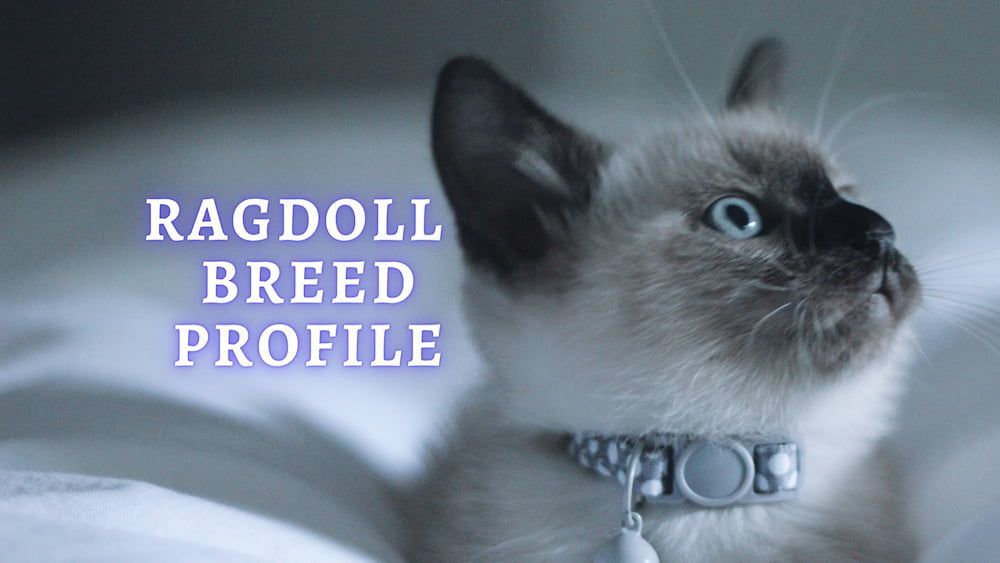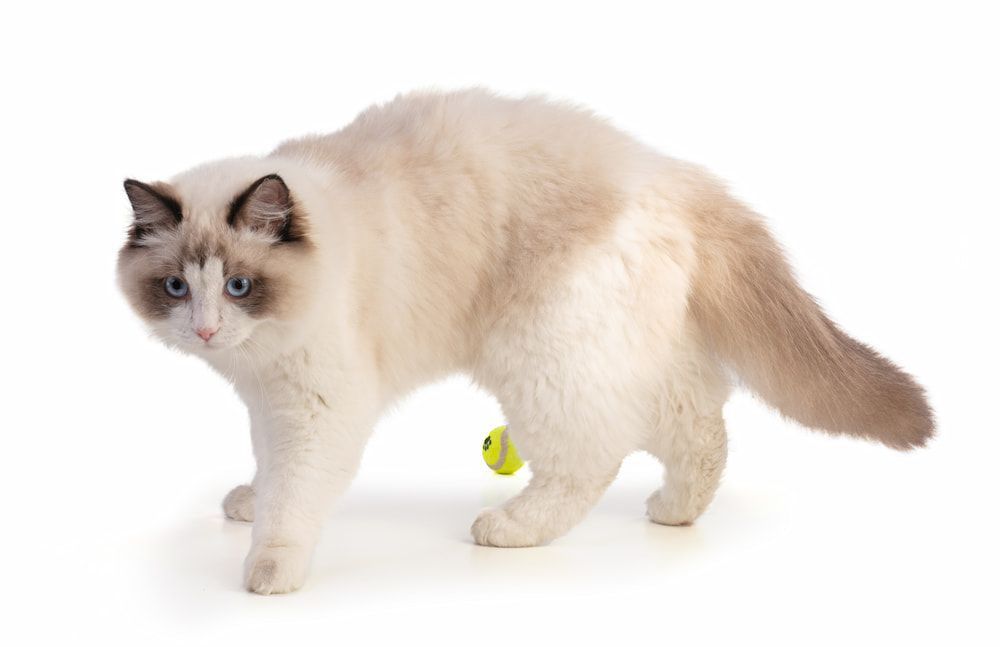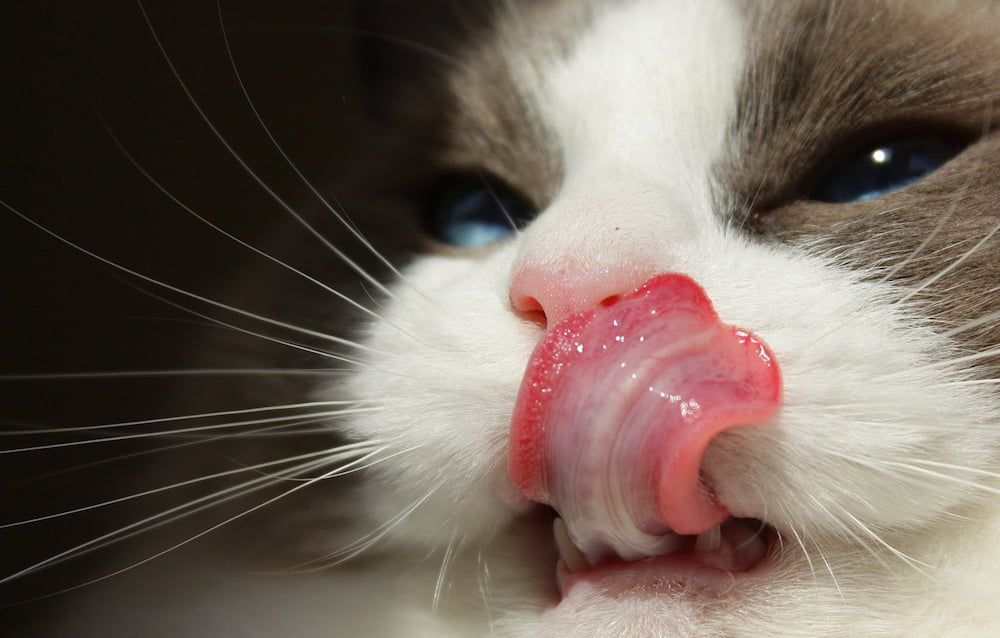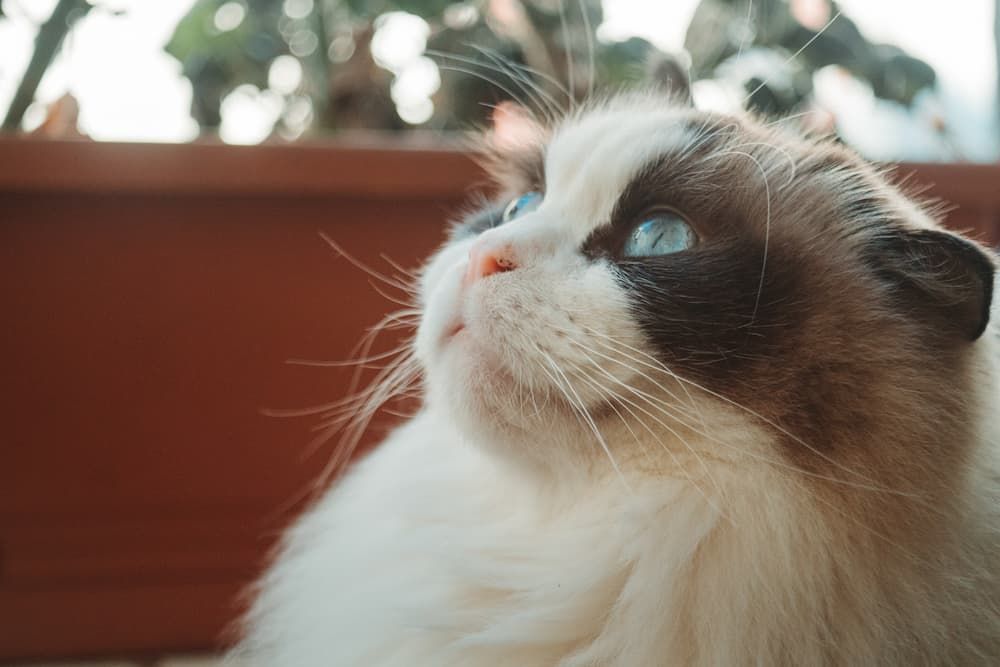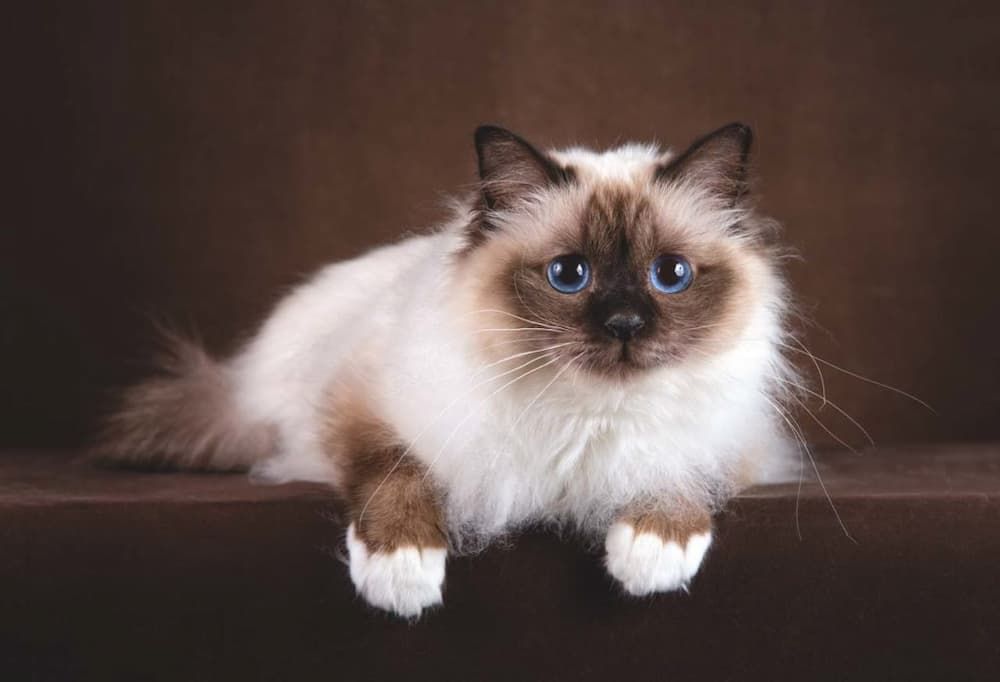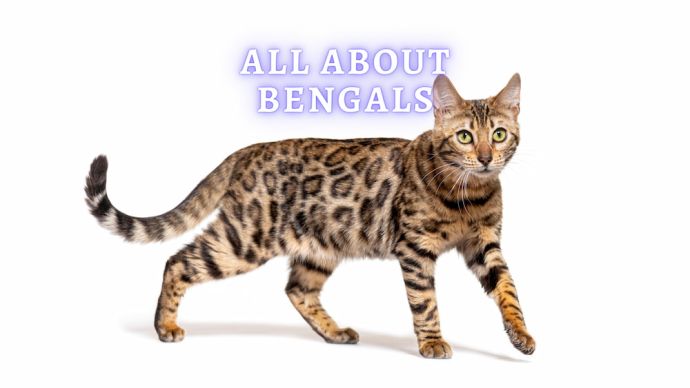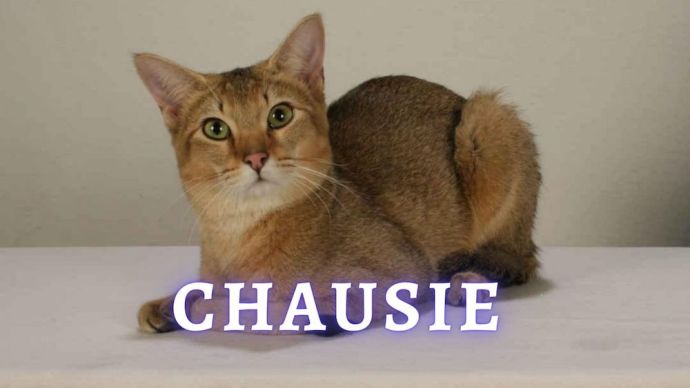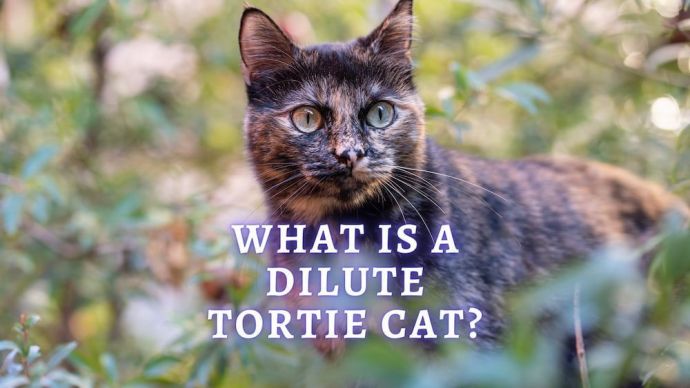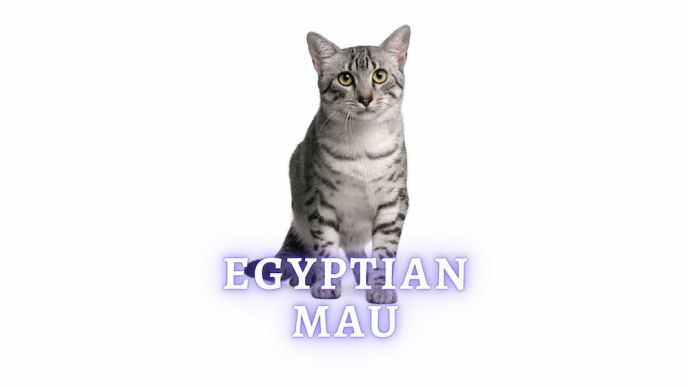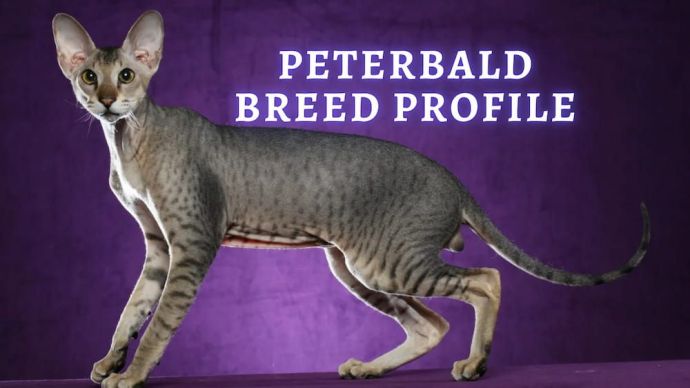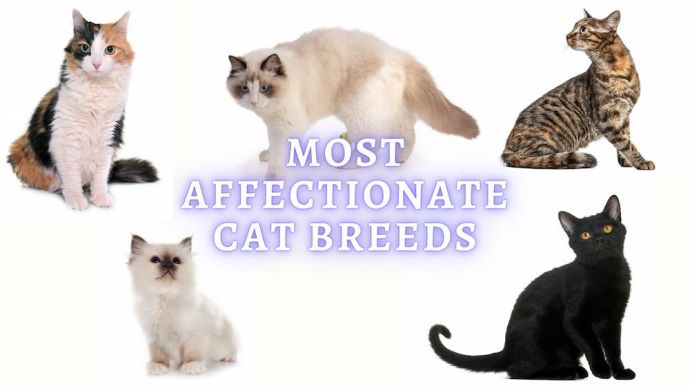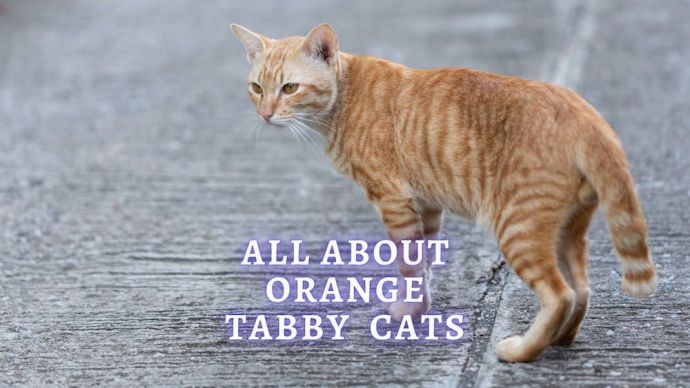Ragdoll Cat: Ragdoll Breed Info and Characteristics
Written by:
Author: Alina Andreeva
Alina A. is a professional writer, editor, and pet-lover. She has published over 50 articles on how to care for pets properly. Alina has been writing articles for 3 years, so she has considerable experience in this niche. Her natural curiosity helps her to expand her knowledge and learn new pet care life hacks, which will make your life much easier.
View all 79 articlesLearn about our editorial process and veterinary review board.
Viewed: 519
Updated on: 12/17/2022
If you train your Ragdoll cat properly, he can quickly learn to be well-behaved and not scratch your furniture. The Ragdoll can become a best friend to almost everyone. They adore their human families and will get along well with nearly every dog.
Gentle, sweet, and always ready to rest in your hugs, the Ragdoll will even greet you at the door when you come home tired after your busy day. So if you are looking for an easygoing buddy, the Ragdoll is the best choice for you.
Characteristics
| Weight | Females up to 15 pounds. Males up to 20 pounds |
| Height | 10-13 inches |
| Colors and Patterns | – white, black / ebony, red; – orange, blue / gray, lavender; – silver, cream / beige; – tan, chocolate / brown; – sable / lilac |
| Lifespan | 13-18 years |
History
Ann Baker is considered the first person to develop Ragdolls in the USA in the twentieth century, so Ragdolls are among the youngest cats in cat breeds. She called the first cat of this breed Ragdoll because the kitten adored collapsing into the arms of anyone who picked him up.
Baker claimed that this breed had developed unusually: aliens, CIA experiments, and infusions of human genes influenced the breed’s formation. But these are just her erratic guesses. Other breeders became interested in Ragdolls and formed the Ragdoll Fanciers Club International. They wanted to standardize the breed and make it recognizable by cat registries. Finally, in 2000 they achieved their goal: The Cat Fanciers’ Association gave them full recognition to this beautiful breed.
Interesting Facts
The Ragdoll is a very unusual cat breed with many characteristics. If you want to become the owner of such a kitten, then you should definitely familiarize yourself with the most interesting facts about the Ragdoll breed.
Let’s find out about them in more detail:
- Unlike their relatives, these cats cannot land on four legs at once. For this reason, ragdolls’ limbs are susceptible to various injuries. However, they do not often happen because these cats are simply too lazy to move around or jump a lot.
- Despite their laziness, ragdoll cats are very smart. They are highly intelligent. You can even expect this animal to learn simple obedience commands.
- The ragdoll’s organism is very unusual. The body of such an animal has a significantly reduced muscle tone, due to which muscle activity is also low. That’s why these cats can soften in your hands, completely relaxing their muscles.
- In 1986, one of the representatives of the Ragdolls got into the Guinness Book of Records. He was recognized as the largest cat in the world.
- Due to the high popularity of the breed, other felines with suitable phenotypes, like Burmese, are often passed off as Ragdolls. They are also excellent, but they have a completely different character.
- Cats of this breed have several growth spurts before they reach maturity. These can continue until the Ragdoll is four years old. Do not be fooled by belly fat, which is the hallmark of the breed. Feed your pet well to fuel their growth until they reach their mature size.
Personality
Unlike many felines, Ragdolls are distinguished by their passion for cuddling sessions. They love their humans, greeting each member at the door and following them around the apartment. They often flop into the arms or get into bed to be closer to the owner. You can easily teach them to come to your call or pick up toys that you throw for them.
The most suitable word to describe them is obedience, but this does not mean they don’t like active games. They willingly take part in family activities and enjoy playing with toys. If you train your Ragdoll cat properly — give treats and praise them when they do what you want — they can quickly learn how to behave well and use a scratching post. When Ragdolls are hungry, they often remind you that it’s high time to have a meal in a small, sweet voice. They can get along with anybody, so it’s quite easy to live with them. They are not haughty and prefer to stay on the same level as their human family members rather than on the highest point in a room. You can see them having a rest on a sofa or bed, but not higher than that.
The serene Ragdoll is perfect for family life. He will not scratch your furniture, and usually, he doesn’t mind playing with children. Males’ large size makes them a good choice for families with kids.
You should teach your children to be kind to animals. Supervise small kids so that they do not torment your cat. And with a cat of this size, it is significant to teach children how to support the cat: with one arm under the front legs and one under the hind legs.
The Ragdoll likes living with other pets, as it has a friendly temperament. Introduce pets slowly and under controlled conditions so that they learn to get along with each other.
| Potential for playfulness | 3 out 5 |
| Activity level | 2 out 5 |
| Friendliness to other pets | 5 out 5 |
| Friendliness to children | 5 out 5 |
| Grooming requirements | 3 out 5 |
| Need for attention | 3 out 5 |
| Affection toward its owners | 4 out 5 |
| Intelligence | 4 out 5 |
| Independence | 3 out 5 |
Activity Level
Ragdolls like to play and will be happy to get busy with toys. They need to play regularly with wand toys or other interactive playthings. The best of all would be to get up and play with them. If you just leave toys around for your feline, he may not get interested and they will be neglected. Spending time together actively will help your kitty shed a few pounds, avoid boredom problems, and strengthen family bonds.
RELATED: Best Toys for Cats
Cat parents can also feed their fluffy friends using a cat puzzle feeder. The best interactive feeder for cats will not only keep your feline friend entertained but it can also have a huge positive impact on your Ragdoll’s mental well-being. Cats may seem independent and detached, but they are intelligent creatures that need not only physical but also mental stimulation.
Ragdolls don’t like to climb high, so their playhouse should be low to the ground. These cats do not require much exercise. You can expect them to spend a lot of time loafing around or curling up for snoozing, with short periods of activity.
Health
Ragdolls can have different health problems, some of which are, unfortunately, genetic. These cats can suffer from the following diseases:
- Hypertrophic cardiomyopathy (HCM), a form of cardiovascular disease that is inherited by Ragdolls. This disease can develop at any age, but more often it appears in older cats, which, unfortunately, could already transmit this disease to their offspring. The disease is especially serious because the first significant symptom is often sudden death at a relatively early age. Hypertrophic cardiomyopathy is the most common feline heart disease and other cat breeds also may suffer from it. [1]
- Predisposition to bladder stones. Crystals and urinary stones can form in a Ragdoll’s bladder depending on the urine composition and other risk factors such as an unbalanced diet, excess weight, or stress. Crystals and urinary stones are especially dangerous for male cats. Their narrow urethra can be blocked very easily. A complete blockage of the urethra is not only extremely painful but can also be fatal as the cat will no longer be able to pass urine. This is always a life-threatening situation that requires immediate medical attention.[2] [3]
Care
Coat
- The Ragdoll has moderately long hair with a little undercoat, which means you don’t need to comb him every day.
- This kitty is less prone to matting and shedding than some other breeds. Comb him twice a week to remove loose hair that can cause mats. Remember to comb the hair on the legs carefully, paying particular attention to the places where the legs meet the body. Here, you can find tangles most often.
- If you are gentle and do not pull their hair, Ragdolls will like the attention they receive from you during combing time.
- Note that seasonal changes, as well as hormonal fluctuations in cats, can affect the length of hair. It will be the longest in winter and the shortest in summer. If you spayed or neutered your cat, it will have beautiful lush fur all year round because it doesn’t suffer from hormonal fluctuations.
- From time to time, check whether the tail is dirty. And if you notice any bits of poop, gently clean it with a wet wipe.
- Bathe your cat if the situation requires: it can vary from a few weeks to several months. If his fur seems greasy, your kitty needs a bath.
Teeth
- Brush your cat’s teeth to prevent oral and dental diseases.
- It is best to brush the teeth every day, but weekly dental hygiene is better than nothing.
Other important things:
- Cut the nails every couple of weeks.
- Wipe the corners of the eyes with a soft, wet wipe to remove any secretions. Use a separate patch of tissue for each eye to prevent the spread of any infection!
- Check your cat’s ears every week. If they are dirty, wipe them out with a cotton-wool swab carefully. Don’t use cotton balls, which can damage the inside of the ear.
- Keep the cat’s litter box clean. Cats are very attentive to bathroom hygiene, and a clean litter box will help to keep the fur clean. Note that a breed like the Ragdoll needs a large-sized box to have enough space to turn around and squat.
- It’s best to keep the Ragdoll at home to protect it from attacks by dogs or coyotes, diseases spread by other cats, cars, and other dangers that cats may face if they go outside.
READ MORE: How to Clean a Litter Box?
Rescue and Adoption
While buying a Ragdoll kitten from a breeder can put a dent in your wallet, you may adopt a Ragdoll cat for a small fraction of the cost. Shelters and rescue centers sometimes have felines of this breed, and you can get a cat for $80-100. You can also find Ragdoll mixes in shelters, like Ragdoll Siamese or Ragdoll Munchkin mixes. Plus, you may get lucky to find felines that are now retired from breeding and are looking for new homes and owners.
Adopting a Ragdoll provides additional benefits. By adopting a grown-up kitty, you will already feel the personality of this cat. If you purchase a kitten, you will not know what his personality will be until he grows up. Pet from a shelter will likely already be sterilized, which will save you additional veterinary costs.
Sources to look for a Ragdoll adoption:
READ MORE: Adopting Older Cat
Are Ragdolls Hypoallergenic?
Unfortunately for highly allergic individuals, cats of this breed are not hypoallergenic. Although some people with cat allergies are less concerned about felines with medium coats, Ragdolls are not considered hypoallergenic. Claiming these cats are hypoallergenic, sellers are trying to jockey a customer and make a fast buck.
Ragdoll cats do not have an undercoat that can reduce allergic reactions in people with dandruff allergies. But most people are actually allergic to feline saliva and skin secretions. These cats still produce allergens that can cause sneezing, itching, and sniffling in their owners.
Ragdoll Breed Mixes
Ragdoll Siamese Mix
The Ragdoll Siamese mix is a hybrid of two breeds – Ragdoll and Siamese. With long hair, this cat usually looks more like Ragdoll than Siamese. This kitty has blue eyes, and his temperament is similar to Ragdoll. His meowing can be loud and persistent. They adopted this trait from Siamese cats. But their relaxed and calm nature comes from the Ragdoll cat breed. Their mind is adorable and it comes from the side of Siamese. In some ways, they resemble dogs.
The weight of a Ragdoll Siamese kitten ranges from 10 to 25 pounds. This is the average weight of male kittens. When it comes to females, their weight ranges from 10 to 15 pounds. They mature slowly. It takes longer for them to grow up than other cat breeds. They become adults after hitting 4.
This mixed breed can live longer than 15 years. His parents also live up to 15 years and sometimes longer. Siamese is one of the longest-living feline breeds. They have a long life expectancy but their lifespan depends on their overall health and life circumstances. So take care of your fluffy friend if you want him to live a long happy life. His half-breed will definitely live even longer. When it comes to Ragdolls, they can live up to 18 years. Hybrid cats live longer than purebred ones. The long lifespan of the mixed breed makes them stronger.
Ragdoll Munchkin Mix
There is no arguing, Ragdoll Munchkin mix is truly a beautiful cat. He has a charming, rounded face with distinctive blue eyes. The temperament is sweet, affectionate and playful. This cute bundle of fur craves people’s attention and will give as much love as you can endure. He is not prone to loud meowing, so he will not stir you from sleep at night. Ragdoll Munchkin mix features a semi-long silky soft fur. Munchkins have short legs, which is a genetic mutation. Such peculiarity makes them look like a dwarf variety. Ragdoll Munchkin mix may also inherit this unique body structure.The colors are cream, chocolate, blue, lilac and black. The patterns range and include bi color, tabby, mitted, and color point. They will need constant grooming if Ragdoll’s traits are dominant. Caring for hybrid animals should include brushing their hair at least twice a week to prevent mats, tangles and excessive shedding.
Ragdoll cats are rather big weighing 10-20 pounds on average. Munchkins are smaller and weigh 4-8 pounds when grown up. So their breed mix should weigh somewhere in-between – 7-14 pounds.
The Ragdoll Munchkin mix generally has a decent life expectancy. These felines live about 15-18 years, depending on health, diet, and environment. The lifespan of a healthy Ragdoll cat is about 15 years. The same thing is with Munchkins, they can live between 12 and 15 years.
READ MORE: All About Munchkin Cats
The bottom line
Fluffy and cute, Ragdolls resemble cuddly little teddy bears. It is a great buddy for a cat lover. They like human families and are very trusting. The Ragdoll is the perfect pet for a family wanting to maintain a relaxed atmosphere in the household.
FAQ
What does a Ragdoll Cat cost?
As for the cost, Ragdoll kittens are very expensive. The price depends on the title of their parents, age, sex, and color. The price range is between $800 for a Ragdoll as a pet and $2000 for a show-quality kitty.
Are Ragdoll Cats high-maintenance?
These cats are neither high-maintenance nor low-maintenance. They need an average level of care. Their silky fur requires regular combing and grooming. Ragdolls are easy to care for once you get used to their habits.
Why are Ragdoll Cats indoor Cats?
Ragdolls have been bred to be indoor felines. They usually have a lot of trust in everyone which can put them in danger. They are not street-savvy and wouldn’t know how to defend themselves against predators. But if you do decide to let your kitty out, you should always supervise him.
Why are Ragdoll Cats so friendly?
Ragdolls are so named because of their ability to lie limp or flop in your arms when they are picked up, just like a rag doll! They are considered one of the most easy-going and friendly cat breeds with a natural desire for attention. Ragdolls can make great pets, especially if you need a loving, friendly companion who will treat everyone in your home with affection.
Article Sources:
- “Ragdoll – Hypertrophic Cardiomyopathy.” Universities Federation for Animal Welfare, ufaw.org.uk/cats/ragdoll-hypertrophic-cardiomyopathy.
- “Feline Struvite and Calcium Oxalate Urolithiasis.” Today’s Veterinary Practice, todaysveterinarypractice.com/feline-struvite-calcium-oxalate-urolithiasis/.
- Brown, Scott. “Urolithiasis in Small Animals.” Merck Veterinary Manual, 1 Oct. 2013, merckvetmanual.com/urinary-system/noninfectious-diseases-of-the-urinary-system-in-small-animals/urolithiasis-in-small-animals.
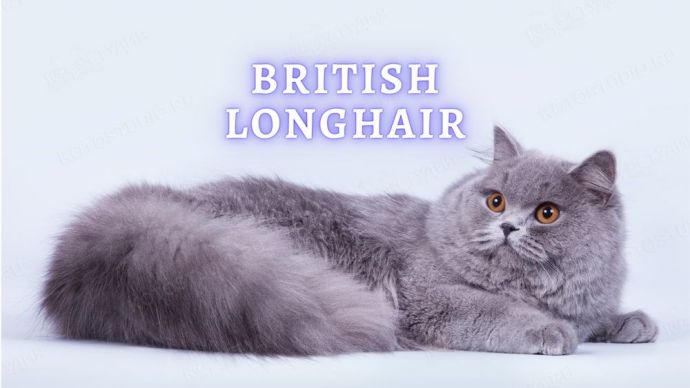 Cat Breeds British Longhair: Everything You Need to Know About the British Longhair Cat
Cat Breeds British Longhair: Everything You Need to Know About the British Longhair Cat - 3090
- 0
 Cat Care Why Does My Cat Attack My Legs? 10 Reasons Why and What To Do About It (Vet-Approved Advice)
Cat Care Why Does My Cat Attack My Legs? 10 Reasons Why and What To Do About It (Vet-Approved Advice) - 46013
- 21
 Cat Veterinary Tips Cat Stomach Gurgling: Vet Advice on Why is Your Cat Stomach Gurgling?
Cat Veterinary Tips Cat Stomach Gurgling: Vet Advice on Why is Your Cat Stomach Gurgling? - 36469
- 4
 Cat Veterinary Tips My Cat Lost its Voice: Can Cats get Laryngitis? (Vet Advice)
Cat Veterinary Tips My Cat Lost its Voice: Can Cats get Laryngitis? (Vet Advice) - 23554
- 13









